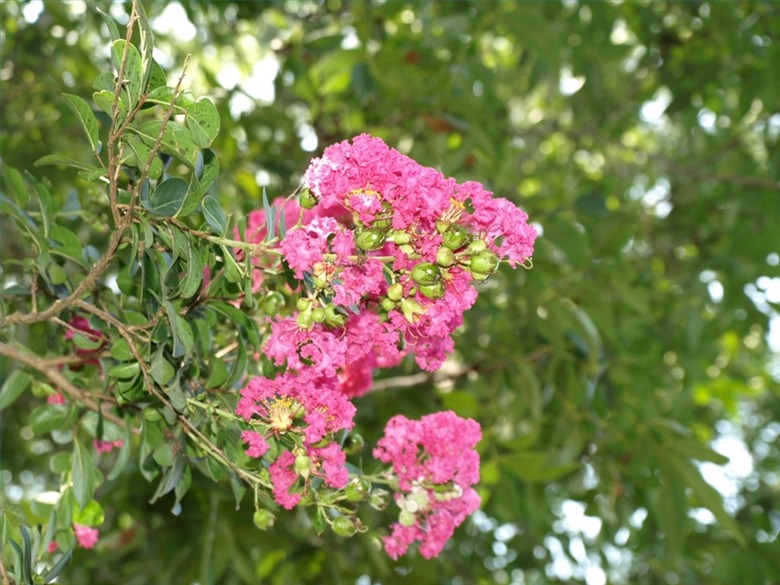How To Grow Crape Myrtle From A Cutting
Things Needed
- Pruning shears or loppers
- Plastic bag and wet paper towels
- Commercial planting material or sand and peat
- Container
- Shovel
- Rooting hormone (optional)
With its large colorful bunches of flowers bursting from graceful branches, crape myrtle is a favorite among gardeners in the Southeast of the U.S. Originally imported from Asia in the eighteenth century, it thrives in zones 7 to 9 but will grow as far north as Boston. Variations from the original white flowered tree are common and colors range from pale pink to dark purple. Size can range from 3 to 4 foot shrubs to 30 -foot trees. Propagation can be done from seeds in the fall, but the most common way to grow a new crape myrtle is through cuttings. They are notoriously easy to grow from cuttings and with the right technique, you should have a healthy established plant in a few years.
Step 1
Cut the soft, new growth if you are collecting cuttings in May or June. From July to early fall, collect the hardwood growth. Morning is the best time to collect cuttings while the tree is fairly dormant.
Step 2
Use a sharp clean cutting tool to avoid spreading diseases to the plant. Pruners usually work well. Cuttings should be about five to seven inches long and no thicker than your pinky finger.
Step 3
Immediately, wrap the cuttings in wet paper towels and place in a plastic bag until you can get them into the planning medium. Don’t leave the cuttings in the bag long or they may mold.
Step 4
Try commercial root hormone to encourage new growth, but crape myrtle will root well without it.
Step 5
Use a commercial planting medium or make your own from equal parts of peat and sand. Use a container that drains well and is big enough for growing roots.
Step 6
Insert two to three inches into the planting medium with the buds pointing up.
Step 7
Avoid direct sun and keep the soil moist. Mist the cuttings often to keep the humidity high. You should see roots within a week. You can keep your new crape myrtles indoors until spring or plant them before fall if you collected them early enough.
Step 8
Choose a sunny well-drained area to transplant your crape myrtle. Dig a hole twice the size of the roots and hold the plant in place. Fill with the extra soil and water well. To keep the moisture in the soil, add a light mulch.
